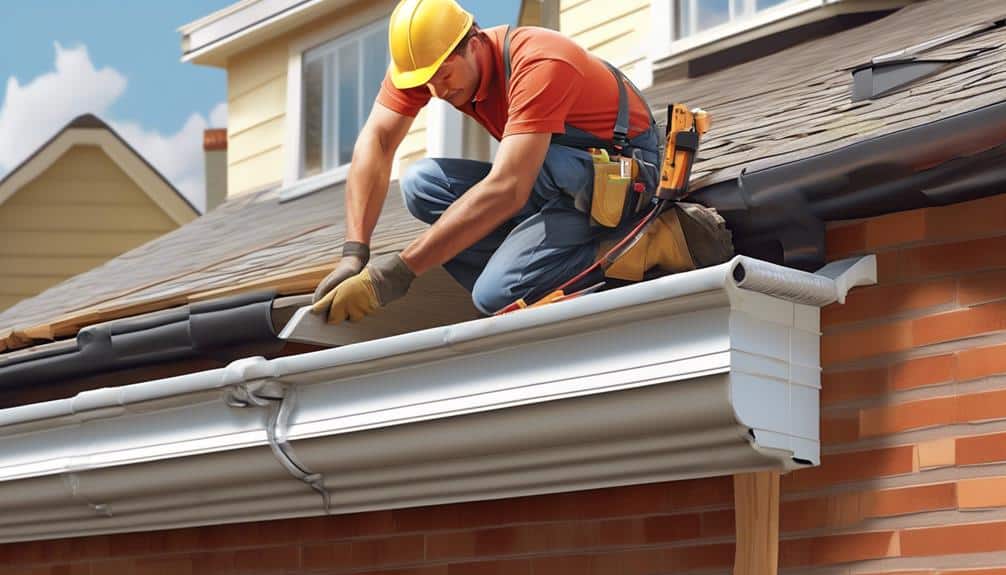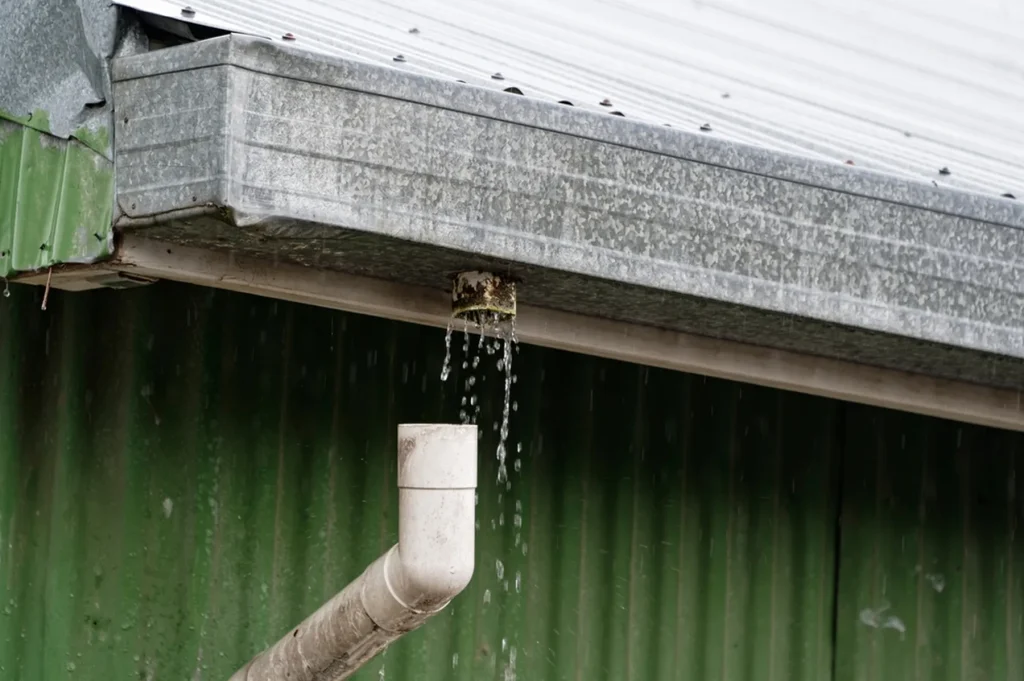Let’s chat about gutters and downspouts. They may not be the most exciting part of your home, but trust me, they play a super important part in keeping your home safe from water damage. You see, selecting the right type of gutter, picking out durable materials, and getting them properly installed is like putting up a shield to protect your home.
On top of that, knowing how to keep these elements in tip-top shape and handle any common problems that pop up can save you a lot of time, money, and stress in the future. So, are you a homeowner looking to learn more, or a contractor keen on keeping up-to-date with best practices? Either way, this guide’s got you covered. We’re going to delve into everything you need to know to make smart decisions and keep those gutters and downspouts working like a charm.
And remember, “Knowledge of your home’s gutters and downspouts is your first line of defence against water damage.” So let’s get started, shall we?
Key Takeaways
- Gutters and downspouts play a crucial role in safeguarding your home from water damage.
- Choosing the right type of gutter and durable materials is essential for setting up a protective barrier.
- Proper installation and regular maintenance can save you time, money, and future headaches.
- Being informed about gutters and downspouts is the first line of defence against water damage. Let’s dive in and learn more!
Types of Gutters and Downspouts
Firstly, let’s talk about materials. The top picks are typically aluminium, vinyl, steel, or copper. Now, aluminium gutters are the go-to for many because they’re light, tough, and won’t rust. Vinyl gutters, on the flip side, are budget-friendly and a breeze to install, not to mention they’re pretty low maintenance. Steel gutters? They’re all about strength and longevity, but keep in mind they may need a regular dose of TLC to keep rust at bay. Lastly, there’s copper gutters. These add a beautiful aesthetic touch and are built to last – we’re talking a century here!
Next up, let’s discuss where to place the downspouts. Factors like the roof’s slope, the landscape, and the intensity of rainfall all play a role. The goal is to ensure water drains properly to avoid damaging the foundation. The corners of the building are usually a good spot, as they promote efficient water flow. But don’t forget to extend the downspouts away from the foundation – downspout extensions or splash blocks can be handy to help divert water away from the building.
Choosing the Right Materials
So, you’re thinking about the best materials for your gutters and downspouts, right? Well, there are a few things you’ll need to keep in mind to make an informed choice that suits your unique needs.
First off, you need to think about how tough your materials need to be. Remember, your gutters and downspouts have to brave the elements day in, and day out. They need to stand up to everything from torrential rain and snow to scorching summer heat. So what are the most reliable materials? Well, aluminium, copper, and stainless steel are widely recognized for their durability.
But hey, it isn’t all about durability, is it? The look of your gutters and downspouts can make or break your home’s curb appeal. You want to choose materials that match your home’s style and architecture. If you’re looking to blend in with your home’s design, aluminium and vinyl are top picks. They come in a whole host of colours and finishes, so you’re sure to find something that matches your exterior design.
Proper Installation Techniques

If you want your gutters and downspouts to work like a charm and stand the test of time, it’s crucial to install them correctly. Let me walk you through some handy tips:
First up, make sure you slope your gutters just right. Many folks don’t get this part correct. You see, your gutters need a tiny downward tilt towards the downspouts, about a quarter-inch for every 10 feet. That way, water will glide along easily without causing any overflow or pooling.
Next, you’ve got to make sure your gutters are attached securely to the fascia board. Using sturdy hangers or brackets about 24 to 36 inches apart will do the trick. But remember, don’t tighten those screws too much, as that could damage your gutters.
Here’s another crucial step – sealing the joints effectively. We all know that leaky joints can lead to water damage on your home’s exterior, right? So, go ahead and apply a top-quality silicone-based sealant to create a watertight bond between your gutter sections, end caps, and corners.
Lastly, think about where you’re installing your downspouts. Space them out evenly, about every 30 to 40 feet, and make sure they’re not positioned over walkways or driveways. You don’t want any water buildup or accidents, do you? Consider adding extensions to steer water away from your house’s foundation.
Essential Maintenance Tips
Keeping your gutters and downspouts in good shape is a must-do, not just a nice-to-have. By putting in a little elbow grease now and then, you’ll ensure these vital parts of your home’s infrastructure work like a charm for years to come.
So, where do you start? Well, a regular once-over of your gutters and downspouts is a good starting point. Keep an eye out for any damage signs – think cracks, leaks, or loose parts. If you spot something, it’s time to take action. Also, look out for any leaves, twigs, or even bird nests that might be blocking your gutters. Keeping your gutters clean is a surefire way to avoid water overflow, which can lead to some serious damage to your home’s foundation.
When it comes to cleaning your gutters, start by getting rid of any big pieces of debris. You can do this by hand or use a scoop – just be careful not to dent or damage the gutters while you’re at it. Once you’ve cleared the big stuff, it’s time to whip out the hose and flush out any remaining dirt or small particles. Make sure the water runs freely through the downspouts to ensure they’re draining properly. Aim to give your gutters a good clean at least twice a year – ideally, in spring and fall, when leaves tend to shed, and debris can pile up.
Troubleshooting Common Issues

Taking care of your gutters and downspouts is no small task, and understanding how to fix everyday issues can save you a lot of hassle down the road. Let’s dive into a couple of common problems that might pop up with your gutters and downspouts:
- Leaky gutters: Have you spotted water seeping from your gutters? There could be several causes behind the leaky gutters, such as faulty gutter joints, punctures or cracks in the gutters, or even gutters choked up with debris disrupting the water flow. The best way to tackle this is to give your gutters a good look-over for any visible damage and fix or swap out any damaged parts. Plus, keeping your gutters clean and clear of debris will ensure the smooth flow of water.
- Blocked downspouts: Blocked downspouts can be a real pain! They can cause water to overflow from the gutters, which could potentially harm your home’s foundation. If you see water not draining correctly from the downspouts, it’s probably due to some sort of blockage. Here’s a handy tip: use a plumber’s snake or even a garden hose to get rid of any debris or blockages in the downspouts. Cleaning your gutters and downspouts regularly can also keep clogging issues at bay.





